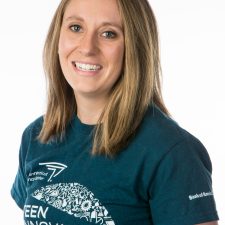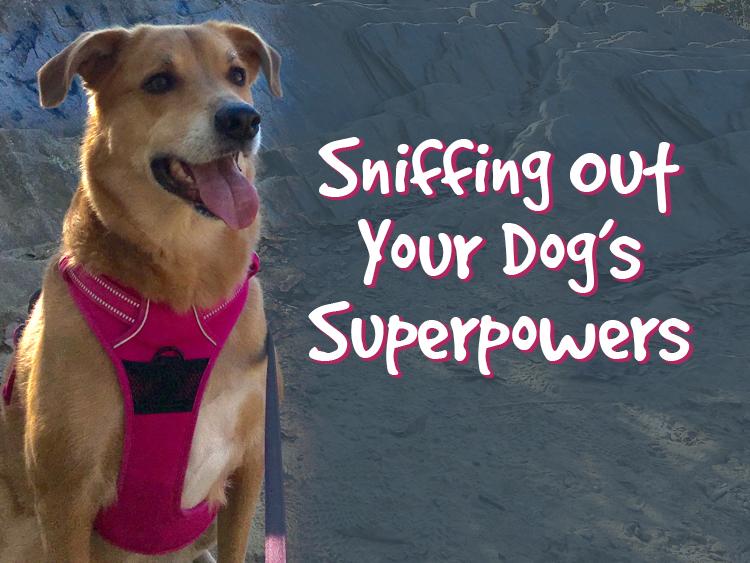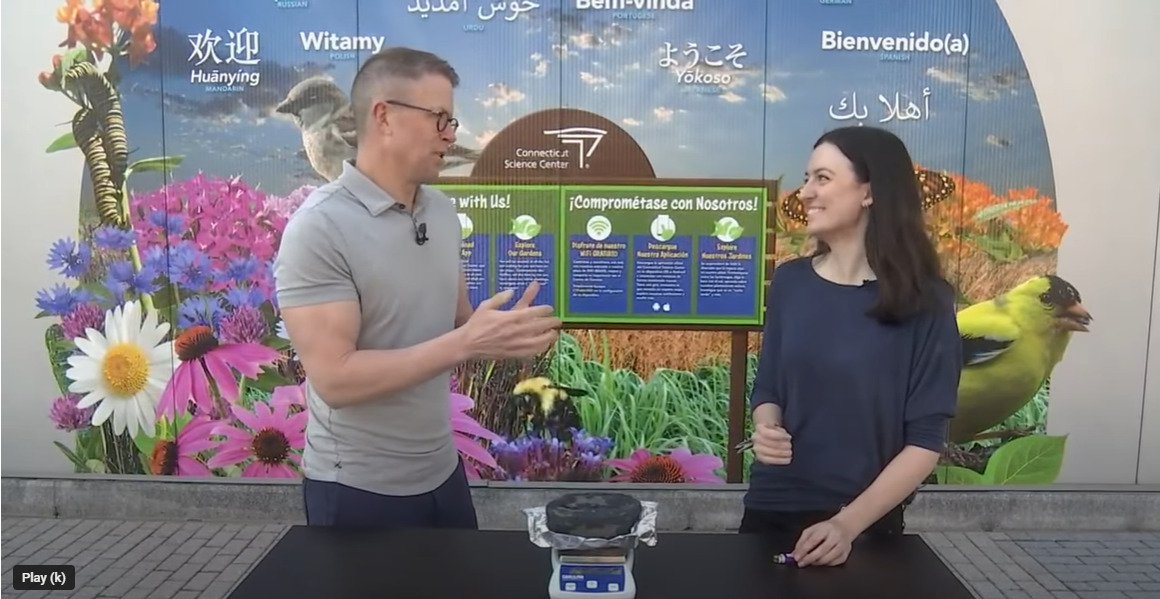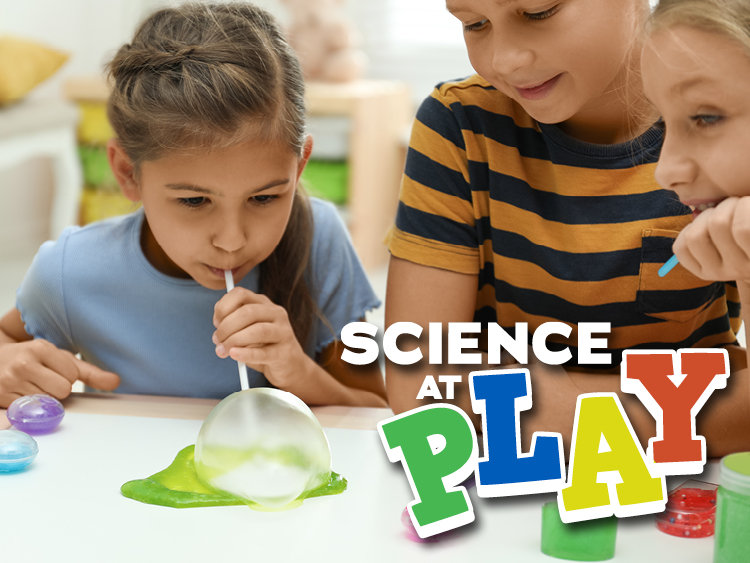Welcome to summer everyone! We finally made it! It’s time to get outside, run through the sprinklers, and play with science. That’s right, get ready to have some good clean fun and explore the world of bubble science with your family, friends, and neighbors.
Top Secret Recipe:
So far, the best recipe we have come up with uses simple ingredients you can find in your house: dish soap, corn syrup, and water. All of these ingredients get combined in a ratio that looks like this:
- 6 parts Water
- 1 part dish soap
- ¼ parts corn syrup
Combine all ingredients into a sealable container and mix until the corn syrup is combined. For best results let your bubble solution sit for 24 hours before use.
(If you are using a 1 cup measuring cup then your recipe would look like this: 6 cups water, 1 cup dish soap, ¼ cup corn syrup)
The Challenge:
Can you build a better bubble recipe?? Try creating your own secret family recipe by using different kinds of soap, playing with ratios, or adding new ingredients!
Can You Catch A Bubble?
Have you ever tried to catch a bubble in your hand? What happens? Try it!
The Challenge:
Using some simple materials you have at home (like napkins, a pair of cotton gloves, even your shirt) see if you can successfully catch a bubble without popping it. Ask your scientists to share their ideas about why they think this works.
Take It To The Next Level:
Now that you are a bubble master, see how many times you can bounce a bubble in the air before it pops, or play a game of bubble catch with a friend! What’s your record?
The Science:
Exploring, asking questions, and testing ideas is at the heart of science. In this case we can explore the answer to the question of why bubbles pop by using some experiences we have every day. What do we use soap & water for?- Washing our hands. Why do we wash our hands? – To get rid of the oils and dirt that collect on our skin, which are the enemy of soap. When your soap bubbles come in contact with these things it causes your beautiful bubbles to POP!
There are lots of other reasons bubbles can pop: the evaporation of water that keeps a bubble moist, air turbulence, or poking a bubble and disrupting the surface tension that creates our bubbles shape. As you are playing and experimenting with your own bubbles, look a little closer and see if you can spot exactly why your bubbles pop!
What’s Up With The Shape of Bubbles?
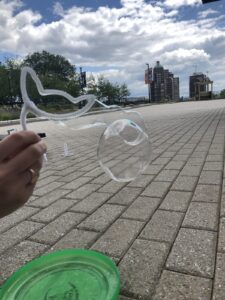 By now you and your scientists probably have a good idea of what shape a bubble is! Just to be sure, blow another bubble. Science is repeatable, and it’s always good to prove your findings one more time.
By now you and your scientists probably have a good idea of what shape a bubble is! Just to be sure, blow another bubble. Science is repeatable, and it’s always good to prove your findings one more time.
The Challenge:
Using pipe cleaners, straws, twist ties, or anything else you can shape (and don’t mind getting soapy) work with your fellow scientists to create a few different shaped bubble wands. Here are a few ideas to get you started:
In science, if it’s safe and you have the tools to test it, then give it a try! What shape bubbles do your wands make? Ask your scientists why they think their bubbles are shaped the way they are.
The Science:
When you blow into your bubble wand the thin film of bubble solution is stretched, but stays together because molecules of water are attracted to each other at the microscopic level. The water molecules want to stay as close together as possible through a phenomenon called surface tension, which makes the thin film stick together. The air trapped inside the bubble pushes the same amount in all directions and our beautiful bubble sphere (3D Circle) is formed!
Take It To The Next Level:
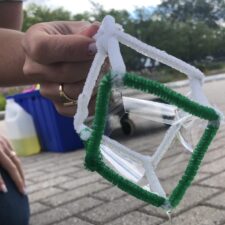
To see surface tension in action, try making a 3D bubble wand (like the one below) and dipping it into a bucket of bubble solution. If you have a spare slinky laying around, put it in a bucket of bubbles holding on to the very top. Lift the top of the slinky straight up out of the bucket and check out what happens next!
Now that you and your scientists are bubble experts, share your results using the #ScienceAtPlay and tagging @ctsciencecenter on social media. We love to see the NEW experiments you come up with so we can celebrate science together! From all of us at the Connecticut Science Center, Happy Bubbling!!
